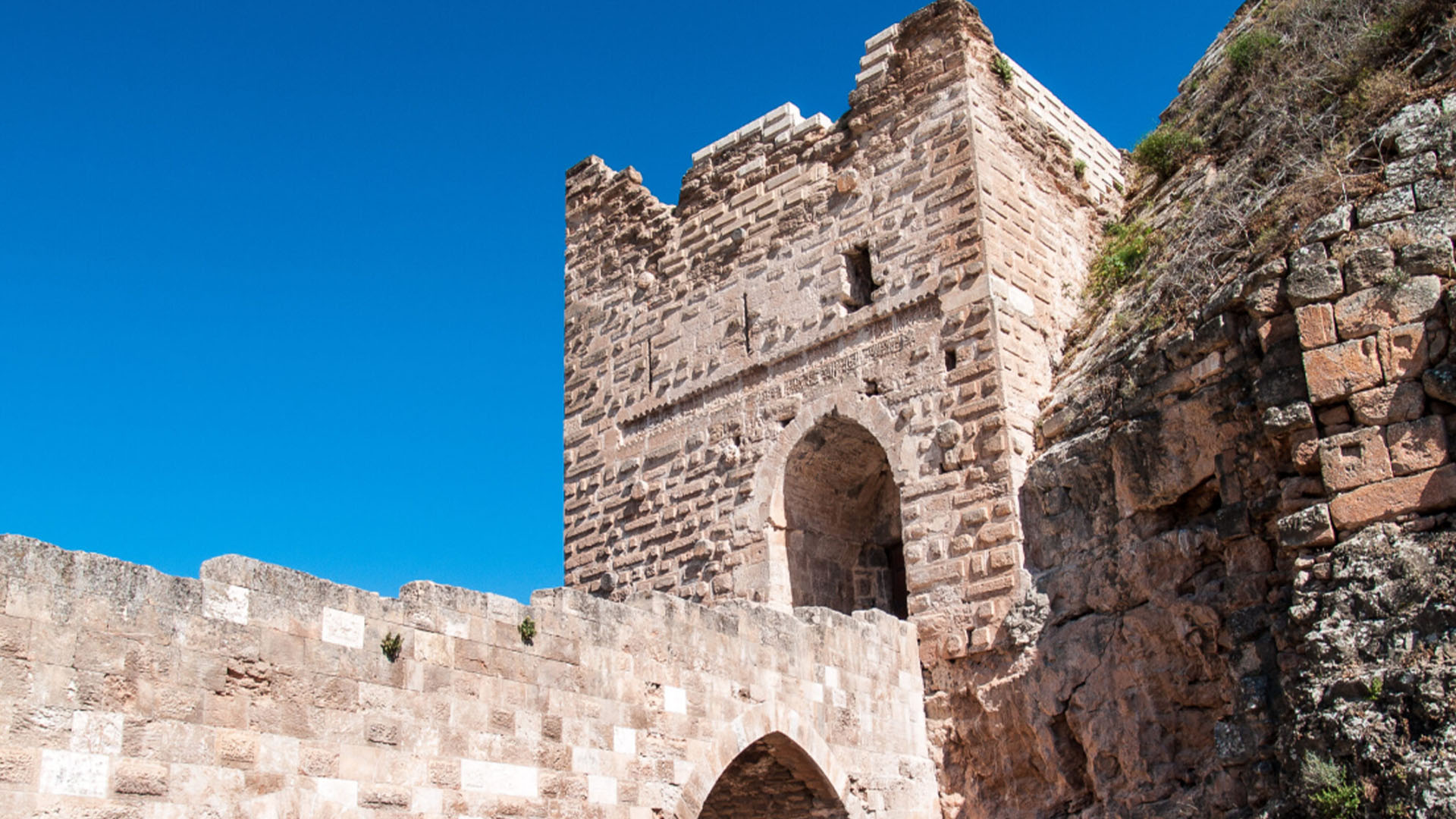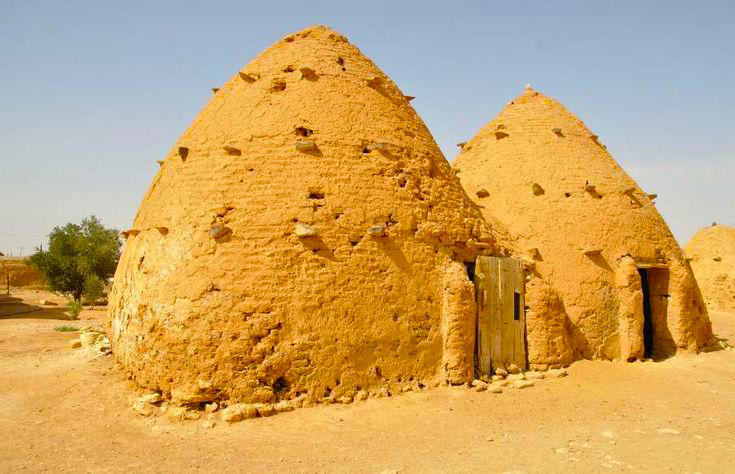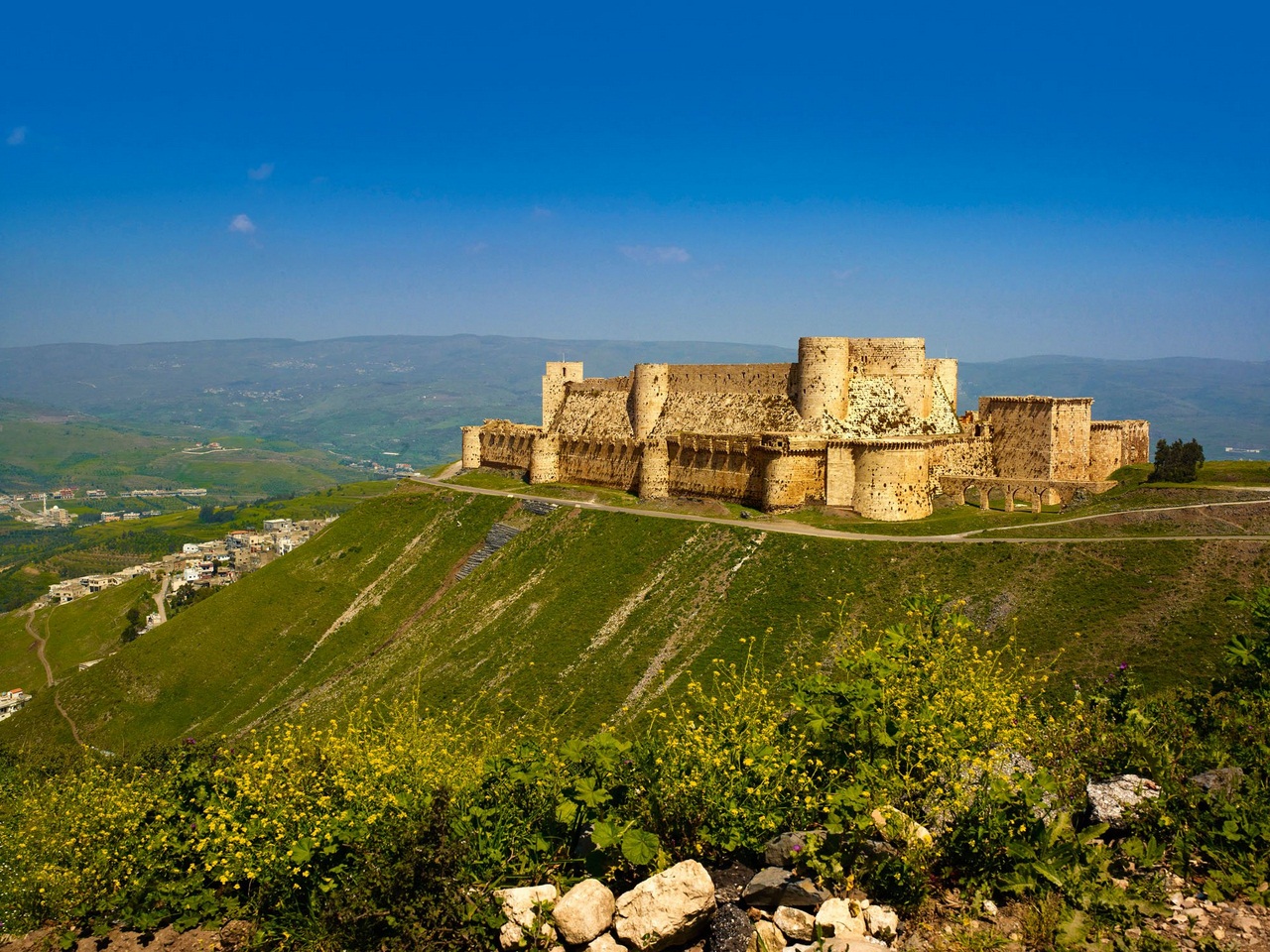Qalaat al-Hosn (قلعة الحصن) perched on a strategic ridge overlooking the Homs Gap, Al-Hosn Castle is one of Syria’s most impressive Crusader fortress. Built atop an earlier fortress and reconstructed by the Knights Hospitaller in the 12th century, this iconic fortress combines military brilliance with medieval architectural elegance. Able to house up to 2,000 soldiers, Qalaat al-Hosn was a key defensive and administrative stronghold until its capture by the Mamluks in 1271. Today, it remains a UNESCO World Heritage Site and a symbol of Syria’s rich medieval heritage.
| Feature | Details |
|---|---|
| Name | Krak des Chevaliers (Qalaat al-Hosn) |
| Location | Near Al‑Husn, Talkalakh District, Homs Governorate, ~40 km west of Homs |
| Built | First fort in 1031; major reconstruction by Knights Hospitaller between 1142–1170 |
| Architectural Style | Concentric Crusader fortress with double walls, towers, moat, chapel, and water system |
| Historical Significance | Key military and administrative center for Crusaders from 12th–13th centuries |
| UNESCO Status | World Heritage Site (since 2006); on UNESCO Danger List since 2013 due to war damage |
| Condition | Largely intact but suffered interior damage during Syrian Civil War; restoration underway |
| Accessibility | By road from Homs; local tours often include it in western Syria itineraries |
| Best Time to Visit | Spring and autumn mornings for cooler weather and clear views |
| Photography | Allowed; excellent for panoramic and architectural shots |
Why Visit

Qalaat al-Hosn offers an unparalleled insight into Crusader-era military strategy and medieval life. Its concentric design—walls within walls—was revolutionary for its time, providing layered defense against attackers. Visitors can explore the massive outer walls with their fortified towers, the inner keep, and the chapel, which still showcases medieval frescoes and carvings. Walking through the castle’s courtyards, cisterns, and defensive passages, you can imagine the garrisoned soldiers preparing for battle or the administrative activity that maintained order in the region.
The castle’s strategic position on a ridge provides breathtaking views over the Homs Gap, allowing you to understand why controlling this corridor was vital for both Crusaders and their adversaries. Despite damage during the Syrian Civil War, Qalaat al-Hosn retains much of its grandeur, and ongoing restoration efforts have helped preserve its key features. Photographers and history enthusiasts alike are drawn to the dramatic towers, the iconic gatehouse, and the panoramic vistas of the surrounding hills and valleys. Each section of Qalaat al-Hosn tells a story of military innovation, daily life, and the challenges of medieval warfare.
How to Reach

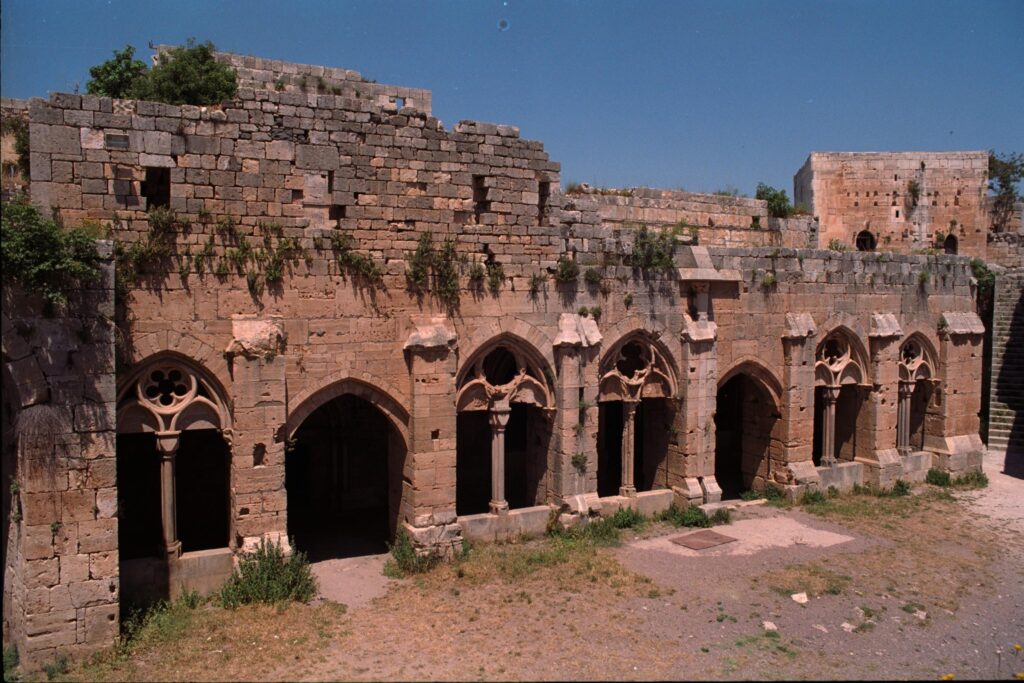
Qalaat al-Hosn is situated about 40 km west of Homs, near the village of Al-Husn. Visitors typically reach the castle by private car or tour vehicle via the Homs–Tartus highway, with the drive from Damascus taking roughly 3–4 hours. Most regional tour operators include Qalaat al-Hosn in western Syria itineraries, often combining it with other nearby historical sites for a full-day exploration. The surrounding road is scenic, with gentle hills and views of the Orontes Valley along the way.
What to Know Before You Go
The site has minimal facilities. There is no formal ticket booth, though visitors may pay a small fee or leave a donation to the onsite caretaker. Comfortable shoes are essential, as the terrain involves uneven stones, stairs, and slopes. Bring water and sun protection, especially during summer months. Guided tours are highly recommended to fully appreciate Qalaat al-Hosn’s history, architectural details, and the stories behind its many walls and towers. While some areas were damaged or looted during recent conflicts, much remains intact, providing a vivid experience of Crusader life and medieval military planning.
Nearby Attractions
- Qalʿat Salāḥ al‑Dīn – Another UNESCO-inscribed fortress about an hour northeast
- Al-Husn village – Traditional town adjacent to the castle
- Other Crusader castles and ruins in the Homs region
- Scenic views of the Orontes Valley and surrounding hills
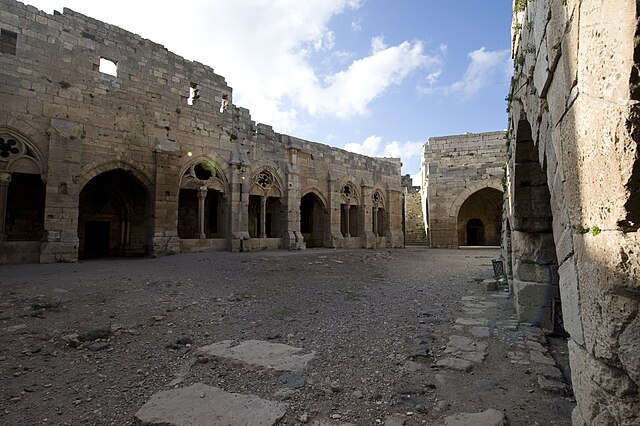



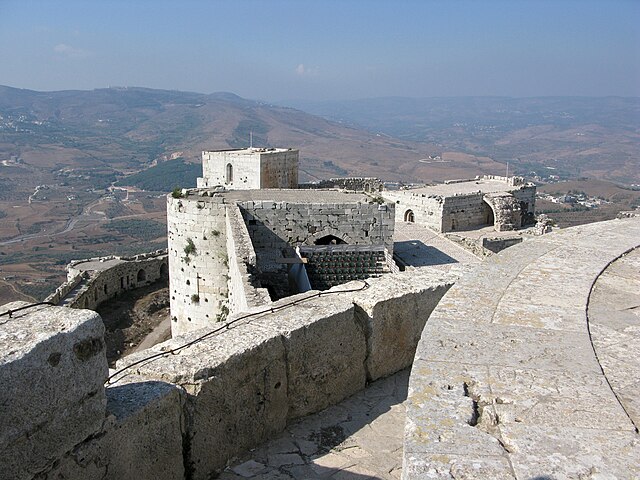
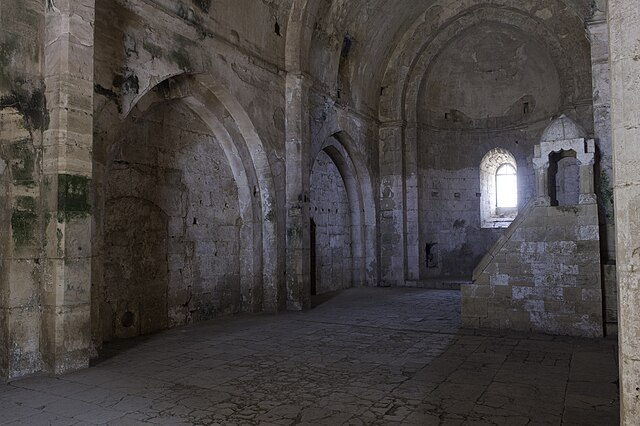
To read more about this topic, click here. To explore further, visit our Facebook Syria Collection for rare images and cultural highlights.
